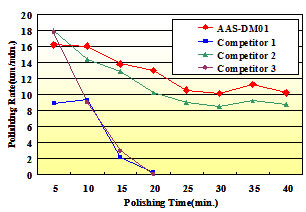
In the next figure, we plotted the aligning torque versus longitudinal tire force for varying longitudinal slip. Polar plot: Use the sketches from exercise 1.d and 1.e, plot lateral tire force F y versus longitudinal tire force F x for different (discrete) values of the slip angle. Give a sketch of the lateral tire force F y versus longitudinal slip κ, for three different values of the slip angle (e.g., α=2°, 4°, and 6°). Sketch the longitudinal tire force F x versus longitudinal slip κ for three different values of the slip angle (e.g., α=2°, 4°, and 6°). The following subquestions address the concept of a tire under combined slip. Indicate in the boxes the peripheral speeds Ω R, Ω R l, and Ω R e to distinguish which values the peripheral speed is varying between. In the preceding figure, clearly indicate the behavior of the peripheral speed of the tire circumference as it approaches the contact area, passes through the contact area, and leaves the contact area. Note that, due to its definition, the effective radius is not affected by the magnitude of the brake force. Especially at low loads and relatively large braking forces, large deviations arise from the value of the effective rolling radius. This ratio does not appear to be a constant. The influence of the average brake torque on the ratio of the torque amplitude and the force amplitude at zero frequency, –d M B/d F x, is given in Figure 9.36. The brake lever arm results from the longitudinal force response to the imposed brake torque variation at zero frequency. The tests from which the brake lever arm can be assessed have been conducted at low levels of the average and the standard deviation of the brake torque random input (120 and 22 Nm, respectively). The right-hand diagram shows the correspondence with the brake lever arm. The left-hand diagram shows the degree of fit for the effective rolling radius. Three different axle heights have been selected corresponding to the indicated initial vertical loads at zero speed F N o. The loaded radius has been kept fixed so that the vertical load rises when the speed is increased. This has the effect of applying a moment to the ball, which will cause it to start rolling.The diagrams of Figure 9.35 present the influence of speed on the two radii. Perhaps the best way to think about it is: "Which way is slippage going to occur if there was no friction?" Friction will always try to counteract slippage, so here it acts up the slope to try to prevent the ball slipping down the slope. On the inclined plane, the ball will tend to slide downwards and if there was no friction then again there would be slippage between the ball and the inclined surface. This is how a car accelerates horizontally, using friction between the wheels and the road. In trying to prevent this slippage, the friction also exerts a horizontal linear force on the wheel, giving it acceleration to the right, so it speeds up. However, friction exists and will try to prevent the slippage, which is why it acts to the right. If there was no friction then the angular velocity would increase and there would be slippage between the wheel and the surface. Presumably in this case there is a torque acting on the axis of the ball/wheel? This torque will act to give angular acceleration to the wheel (clockwise). Friction will only act to try to prevent slippage between 2 surfaces. If the wheel is rolling at constant velocity without any other forces acting, then there is no tendency for slippage between the wheel and the surface, so there is no friction. So friction is necessary for a ball to start rolling but once the rolling condition has been met the ball experiences no friction. So as the edge touching the ground is stationary it experiences no friction. The condition for rolling at speed $v$ is that the angular velocity of the ball is given by $$v=\omega r$$įrom this the top of the ball will move at speed $2v$ the centre of mass of the ball will move at $v$ and the bottom edge of the ball will instantaneously be at rest.


So static friction is infact necessary for a ball to begin rolling. This friction applies a torque to the ball which starts the rotation. If you consider the case where there is friction, if the force is again applied to a stationary ball the frictional force will act in the opposite direction to the force but at the edge of the ball that rests on the ground. If you consider a ball intially at rest on a frictionless surface, if a force is exerted through the centre of mass of the ball it will slide across the surface with no rotation, there will only be translational motion. Hopefully this will answer at least some of your questions.


 0 kommentar(er)
0 kommentar(er)
